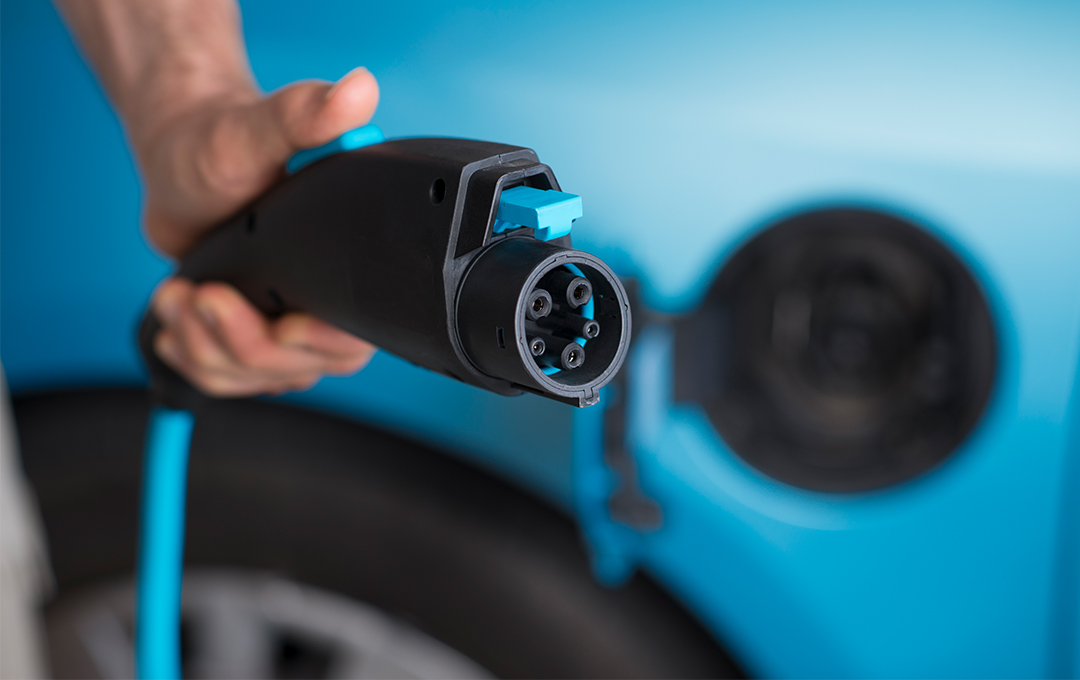Plug-in Hybrid-Electric Cars
Plug-in hybrid-electric cars combine two propulsion modes in one vehicle–a battery-powered electric motor that is plugged in and recharged, and an internal combustion engine that is fueled with gasoline. They offer all-electric power for short trips and the opportunity to gas up and drive for as far as you desire. Plug-in hybrid cars vary in the distance they can travel on all-electric power, and the fuel efficiency and emissions they have when driving on gasoline.
Because most Californians commute less than 30 miles per day, most plug-in hybrid-electric driving can be done in electric-only mode.
Benefits
- Fun to drive
- Quiet when in electric driving mode
- Quick off the line
- Convenient to recharge
- Reduced trips to the gas station
- High-tech
- Cheaper to operate
- Reduced pollution
- Access to carpool lanes and other incentives
- Fuel with gas when going on longer trips
How They Work
Plug-in hybrid-electric cars offer both gas-only and electric-only driving—even at relatively high speeds. With smaller batteries than battery-electrics, plug-in hybrids achieve an electric-only range of 10‒80 miles, during which they produce no tailpipe emissions. When the vehicle uses up its electric range, it switches to gas and drives just like a conventional car.
The transition from electric to gas is seamless, though you do lose quick acceleration inherent in electric mode. Some plug-in hybrids run full time on gas and electricity, switching back and forth until the electric supply runs down.
One of the main benefits of plug-in hybrids is that most day-to-day driving can be done in an electric-only mode, traveling on battery power alone between 10-80 miles with the capability of 600+ miles in gasoline-electric hybrid mode. Factoring in access to public and workplace charging, you can potentially double your all-electric range on a daily basis.

- Engine – Assists electric motor when driving at high speeds, and powers the vehicle when the battery is depleted
- Electric Motor – Powered from the battery, the electric motor propels the vehicle up to high speeds
- Gas Tank – Smaller gas tank than conventional cars
- Onboard Charger – Converts incoming AC electricity to DC power for charging the battery
- Electric Generator – Captures energy from regenerative braking and transfers to battery
- Charge Port – Enables the vehicle to be plugged in to an external power source to charge battery
- Battery – Stores typically between 8-16 kWh of electricity to power the electric motor
Availability
There are many types of plug-in hybrids available in a variety of sizes and price points. Search vehicles to see available models.
Performance
Like battery-electric cars, plug-in hybrids have quick acceleration, great torque and a quiet drive in the electric mode. When electric and gas miles are combined, plug-in hybrids offer great miles per gallon ratings and reduced pollution. Even in gas mode, they generally still have lower emissions and good miles per gallon ratings.
Costs
Plug-in hybrids generally cost more than a conventional gas car, but there are incentives available for eligible plug-in hybrids and different lease options that reduce upfront costs and allow drivers to get technology upgrades faster.
Plug-in hybrids have the same basic need for oil changes, filters and other regular maintenance, however the frequency of this requirement is significantly less. Regenerative breaking also extends the lifespan of brake pads. Savings increase as more all-electric miles are driven, since electricity is generally cheaper than gasoline. Plug-in hybrids typically have an 8-10 year/100,000-mile or more battery warranty.
Incentives
Plug-in hybrids may be eligible for a variety of incentives to support clean transportation ownership in low-income and disadvantaged communities. To find incentives in your region, visit incentive search.
Charging/Fueling

Plug-in hybrids recharge with electricity as well as refuel with gasoline. They can charge via a cord set that comes with the vehicle using standard 120-volt home outlets, or by plugging into a more powerful Level 2 charger, either at work or home or at many public parking locations.
Learn more about charging options for plug-in hybrid cars.
Additional Resources
ElectricForAll.org
A comprehensive listing of electric car models currently available in California, including incentives.
Plug-in Electric Vehicle Handbook (U.S. DOE)
A plug-in electric vehicle handbook that answers basic questions and points readers to additional information to make the best vehicle selection.
PluginCars.com
Information about charging, range, batteries, incentives and more explained in simple terms.
California’s Advanced Clean Cars Program (CARB)
Understand how California’s emission rules for cars and trucks will help clean the air, abate climate change and provide cars that save consumers money at the pump.
